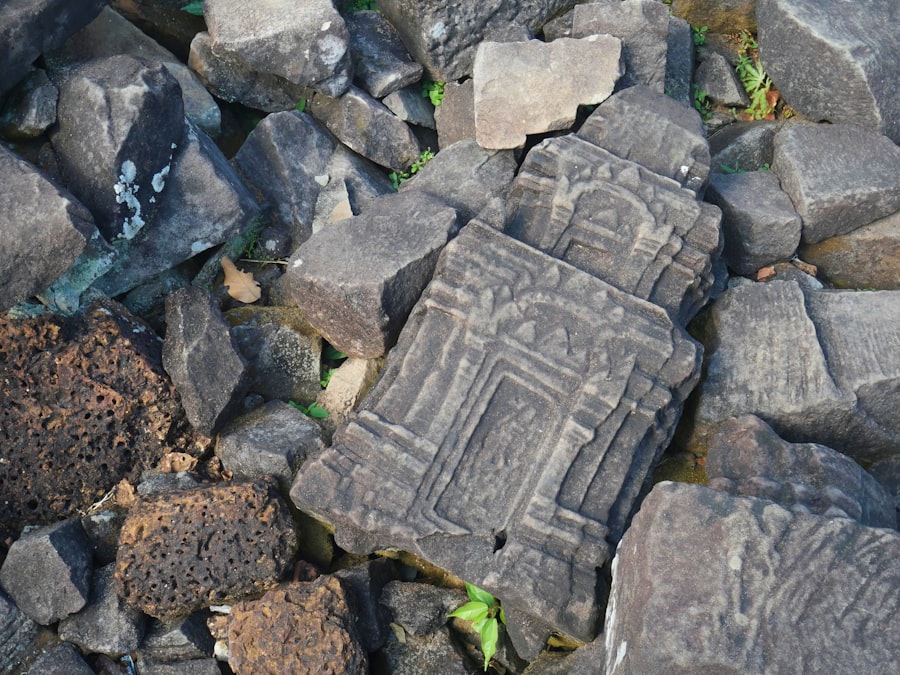Ethnohistory is a multidisciplinary field that merges the methodologies of history, anthropology, and archaeology to study the past of specific cultural groups, particularly indigenous populations. This approach allows researchers to explore the complexities of cultural identity, social structures, and historical narratives that have often been overlooked or misrepresented in traditional historical accounts. By examining the interplay between cultural practices and historical events, ethnohistory provides a nuanced understanding of how communities have navigated their environments and interacted with external forces over time.
The significance of ethnohistory lies in its ability to give voice to marginalized groups whose histories have been silenced or distorted. Traditional historical narratives often prioritize written records and the perspectives of dominant cultures, leaving indigenous voices unheard. Ethnohistory seeks to rectify this imbalance by incorporating diverse sources of information, including oral traditions, archaeological findings, and ethnographic studies.
This integrative approach not only enriches our understanding of specific cultures but also challenges prevailing historical interpretations, fostering a more inclusive view of the past.
Key Takeaways
- Ethnohistory is the study of the history of indigenous peoples and their cultures, using a combination of archaeological, written, oral, and ethnographic sources.
- Archaeological sources, such as artifacts and structures, provide important insights into the material culture and lifeways of indigenous peoples in the past.
- Written records and documents, including colonial accounts and indigenous manuscripts, offer valuable perspectives on historical events and cultural practices.
- Oral traditions and indigenous knowledge passed down through generations provide unique insights into the beliefs, customs, and experiences of indigenous communities.
- Ethnographic studies and fieldwork involve direct engagement with contemporary indigenous communities to understand their current cultural practices and perspectives.
Archaeological Sources of Ethnohistory
Archaeological sources play a crucial role in ethnohistory by providing tangible evidence of past human behavior and cultural practices. Artifacts such as tools, pottery, and architectural remains offer insights into the daily lives, economic activities, and social structures of ancient communities. For instance, the excavation of a site in the American Southwest revealed a complex network of irrigation systems used by the Ancestral Puebloans.
These findings not only illuminate agricultural practices but also suggest sophisticated social organization and resource management strategies that were essential for survival in a challenging environment. Moreover, archaeological evidence can help to corroborate or challenge historical narratives derived from written records. In many cases, the material culture unearthed at archaeological sites can provide a more accurate picture of indigenous life than what is documented in colonial accounts.
For example, the analysis of burial practices among Native American tribes has revealed significant variations that contradict European settlers’ assumptions about indigenous spirituality and social hierarchy. By examining these archaeological sources, ethnohistorians can reconstruct a more comprehensive understanding of cultural continuity and change over time.
Written Records and Documents

Written records are another vital component of ethnohistory, offering insights into the perspectives of both indigenous peoples and outsiders who interacted with them. Historical documents such as treaties, government reports, and missionary accounts provide valuable context for understanding the dynamics between different cultural groups. However, it is essential to approach these texts critically, recognizing that they often reflect the biases and agendas of their authors.
For instance, early European explorers frequently depicted indigenous populations through a lens of superiority, framing their observations in ways that justified colonization and exploitation. In addition to colonial documents, indigenous-produced texts—such as letters, legal documents, and oral histories transcribed by community members—offer alternative narratives that challenge dominant historical interpretations. The writings of Native American leaders during the 19th century, for example, reveal a rich tapestry of resistance and adaptation in response to colonial pressures.
These documents not only serve as primary sources for ethnohistorians but also empower indigenous communities by validating their experiences and perspectives in the historical record.
Oral Traditions and Indigenous Knowledge
Oral traditions are a cornerstone of ethnohistorical research, providing a wealth of knowledge about cultural practices, historical events, and social values passed down through generations. These narratives often encompass creation stories, migration accounts, and genealogies that are integral to a community’s identity. Ethnohistorians recognize that oral traditions are not merely anecdotal; they are complex systems of knowledge that reflect the lived experiences and worldviews of indigenous peoples.
For example, the oral histories of the Haudenosaunee (Iroquois) Confederacy reveal intricate details about their governance systems and social organization long before European contact. These narratives emphasize the importance of consensus-building and collective decision-making, which contrasts sharply with European hierarchical models. By documenting and analyzing these oral traditions, ethnohistorians can uncover alternative frameworks for understanding governance and social relations that have persisted despite colonial disruptions.
Furthermore, oral traditions often serve as repositories of ecological knowledge, offering insights into sustainable practices that have been honed over centuries. Indigenous communities possess deep understandings of their environments, including seasonal cycles, plant uses, and animal behaviors. Ethnohistorical research that incorporates these perspectives can inform contemporary discussions on environmental stewardship and conservation efforts, highlighting the relevance of traditional ecological knowledge in addressing modern challenges.
Ethnographic Studies and Fieldwork
Ethnographic studies are essential for capturing the lived experiences of contemporary indigenous communities and understanding how they navigate their identities in a rapidly changing world. Through immersive fieldwork, ethnographers engage with community members to document cultural practices, social dynamics, and responses to external pressures. This qualitative approach allows researchers to gain insights into the complexities of identity formation and cultural resilience in the face of globalization and colonial legacies.
For instance, ethnographic research among the Sami people in Northern Europe has revealed how traditional reindeer herding practices are intertwined with contemporary issues such as climate change and land rights. By participating in seasonal migrations and engaging with Sami elders, ethnographers can document not only the practical aspects of herding but also the cultural significance attached to these practices. This kind of fieldwork emphasizes the importance of context in understanding how indigenous communities adapt their traditions while asserting their rights in modern society.
Moreover, ethnographic studies often highlight the agency of indigenous peoples in shaping their narratives and identities. Rather than being passive subjects of research, many communities actively engage with scholars to reclaim their histories and assert their cultural sovereignty. Collaborative projects that prioritize community involvement can lead to more accurate representations of indigenous experiences while fostering mutual respect between researchers and participants.
Combining Multiple Sources for a Holistic Understanding

The strength of ethnohistory lies in its ability to synthesize multiple sources—archaeological evidence, written records, oral traditions, and ethnographic studies—to create a holistic understanding of cultural histories. This integrative approach allows researchers to cross-verify information and construct more nuanced narratives that reflect the complexities of human experience. By weaving together diverse strands of evidence, ethnohistorians can illuminate patterns of continuity and change that might otherwise remain obscured.
For example, an ethnohistorical study of the Plains Indians might combine archaeological findings related to bison hunting practices with oral histories recounting significant events such as the introduction of horses by European settlers. By juxtaposing these sources, researchers can better understand how technological changes influenced social structures and cultural practices among these communities. This comprehensive analysis not only enriches our knowledge of Plains Indian history but also highlights the interconnectedness of various factors shaping their experiences.
Furthermore, combining multiple sources fosters a more inclusive historical narrative that acknowledges the contributions and perspectives of diverse cultural groups. In an era where historical revisionism is increasingly prevalent, ethnohistory serves as a vital tool for challenging dominant narratives and promoting social justice. By centering indigenous voices and experiences within broader historical contexts, ethnohistorians contribute to a more equitable understanding of our shared past.
In conclusion, ethnohistory stands as a testament to the power of interdisciplinary research in uncovering the rich tapestry of human experience. By integrating archaeological evidence, written records, oral traditions, and ethnographic studies, this field offers profound insights into the lives of marginalized communities while challenging conventional historical narratives. As we continue to explore the complexities of cultural identity and historical memory through an ethnohistorical lens, we pave the way for a more inclusive understanding of our collective heritage.
If you are interested in exploring the rigorous approach to philosophical inquiry, you may want to check out the article on Analytic Philosophy: A Rigorous Approach to Philosophical Inquiry. This article delves into the methods and principles of analytic philosophy, which can provide valuable insights into the study of ethnohistory. By examining the logical and conceptual foundations of different philosophical perspectives, researchers can gain a deeper understanding of the sources and interpretations of historical and cultural data.
FAQs
What is ethnohistory?
Ethnohistory is the study of the history of different ethnic groups and cultures, focusing on their interactions with each other and with colonial powers.
What are the sources of ethnohistory?
The sources of ethnohistory include archaeological evidence, written documents, oral traditions, and ethnographic studies.
How do archaeology and material culture contribute to ethnohistory?
Archaeology and material culture provide physical evidence of past human activities, such as artifacts, structures, and environmental remains, which can help reconstruct the history and lifeways of different ethnic groups.
What role do written documents play in ethnohistory?
Written documents, such as colonial records, missionary accounts, and indigenous manuscripts, provide valuable insights into the interactions and experiences of different ethnic groups throughout history.
How are oral traditions used in ethnohistory?
Oral traditions, including myths, legends, and oral histories, are important sources of information about the cultural practices, beliefs, and historical events of different ethnic groups, especially those without a written tradition.
What is the significance of ethnographic studies in ethnohistory?
Ethnographic studies, which involve the systematic study of contemporary cultures and societies, provide valuable comparative data and insights into the historical and cultural contexts of different ethnic groups.






















+ There are no comments
Add yours